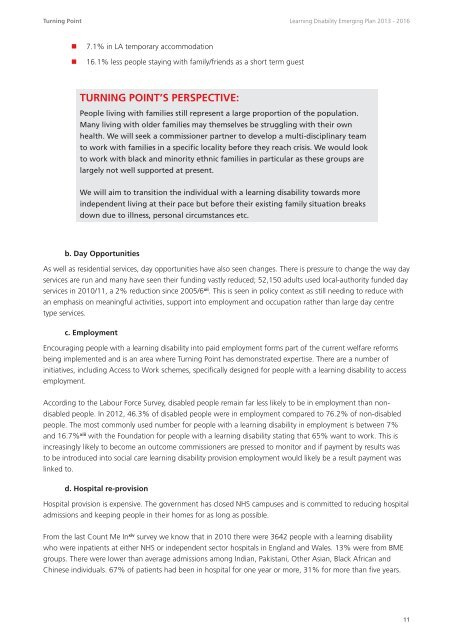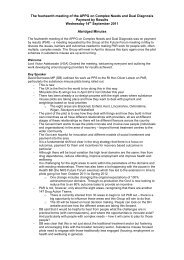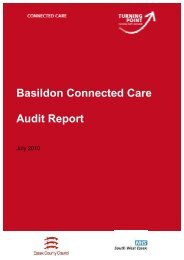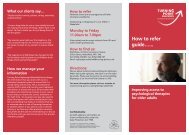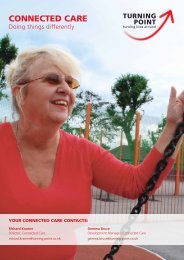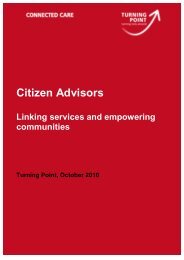Learning Disability Emerging Plan - Turning Point
Learning Disability Emerging Plan - Turning Point
Learning Disability Emerging Plan - Turning Point
You also want an ePaper? Increase the reach of your titles
YUMPU automatically turns print PDFs into web optimized ePapers that Google loves.
<strong>Turning</strong> <strong>Point</strong> <strong>Learning</strong> <strong>Disability</strong> <strong>Emerging</strong> <strong>Plan</strong> 2013 - 2016• n 7.1% in LA temporary accommodation• n 16.1% less people staying with family/friends as a short term guestTURNING POINT’S PERSPECTIVE:People living with families still represent a large proportion of the population.Many living with older families may themselves be struggling with their ownhealth. We will seek a commissioner partner to develop a multi-disciplinary teamto work with families in a specific locality before they reach crisis. We would lookto work with black and minority ethnic families in particular as these groups arelargely not well supported at present.We will aim to transition the individual with a learning disability towards moreindependent living at their pace but before their existing family situation breaksdown due to illness, personal circumstances etc.b. Day OpportunitiesAs well as residential services, day opportunities have also seen changes. There is pressure to change the way dayservices are run and many have seen their funding vastly reduced; 52,150 adults used local-authority funded dayservices in 2010/11, a 2% reduction since 2005/6 xii . This is seen in policy context as still needing to reduce withan emphasis on meaningful activities, support into employment and occupation rather than large day centretype services.c. EmploymentEncouraging people with a learning disability into paid employment forms part of the current welfare reformsbeing implemented and is an area where <strong>Turning</strong> <strong>Point</strong> has demonstrated expertise. There are a number ofinitiatives, including Access to Work schemes, specifically designed for people with a learning disability to accessemployment.According to the Labour Force Survey, disabled people remain far less likely to be in employment than nondisabledpeople. In 2012, 46.3% of disabled people were in employment compared to 76.2% of non-disabledpeople. The most commonly used number for people with a learning disability in employment is between 7%and 16.7% xiii with the Foundation for people with a learning disability stating that 65% want to work. This isincreasingly likely to become an outcome commissioners are pressed to monitor and if payment by results wasto be introduced into social care learning disability provision employment would likely be a result payment waslinked to.d. Hospital re-provisionHospital provision is expensive. The government has closed NHS campuses and is committed to reducing hospitaladmissions and keeping people in their homes for as long as possible.From the last Count Me In xiv survey we know that in 2010 there were 3642 people with a learning disabilitywho were inpatients at either NHS or independent sector hospitals in England and Wales. 13% were from BMEgroups. There were lower than average admissions among Indian, Pakistani, Other Asian, Black African andChinese individuals. 67% of patients had been in hospital for one year or more, 31% for more than five years.11


